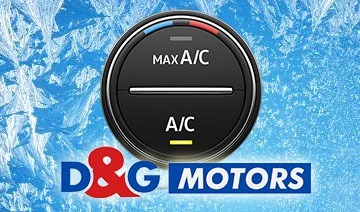Is your A/C Working Correctly?
S YOUR A/C NOT BLOWING COLD?
Vehicle air-conditioning systems need re-gassing every two years.
Maintaining your vehicle’s air-conditioning system is actually very reasonable:
Air-conditioning temp test – FREE
Air-conditioning Anti-bacterial clean – £12.99
Air-conditioning re-gas – £49 – £165 (Depending on gas type and required ammounts.)
Air-conditioning service – £89 – £185 (Depending on gas type and required ammounts.)

HOW IT WORKS
Your car’s air-conditioning system includes six integral parts:
- Refrigerant (the gas)
- Compressor (which contains the refrigerant)
- Condenser
- Receiver
- Thermal expansion valve
- Evaporation coils
When the air-conditioning system is activated, the refrigerant (gas) travels to the condenser. Fresh air from the atmosphere passes over the condenser, which causes the gas to drop in temperature and become a liquid.
That liquid passes through a receiver, which removes impurities, before reaching a thermal expansion valve. The valve allows you to control the temperature by adjusting the flow of the liquid. The liquid is then turned into a vapour as it passes through the evaporation coils, which subsequently gets blown into the cabin as cool air. The refrigerant has become a gas again by this point, and returns to the compressor ready for the process to start all over again.
HOW OFTERN SHOUD MY A/C BE SERVICED?
The general rule of thumb is that your vehicle’s air-conditioning needs re-gassing every two years. The reason for this is because it’s estimated that your car permeates between 10 – 15% of gas from the system every year; and that’s before you’ve even used it!
An air-con service also presents a good time to get the system de-bugged, which essentially decontaminates the whole system. This is recommended because aspects of the air-conditioning system are a breeding ground for bacteria, which in turn leads to bad odours.
Note: Ignoring a bacteria build up in your air-conditioning system can potentially have an adverse affect on allergies.




